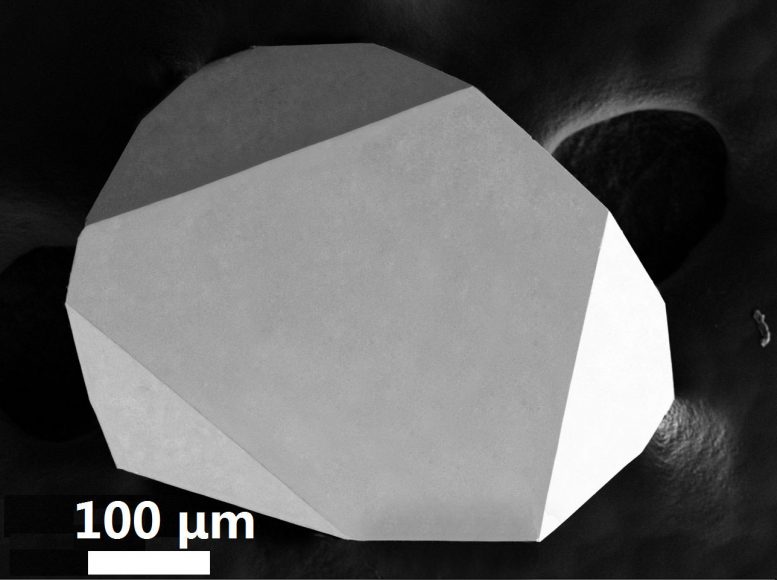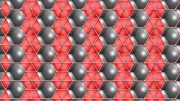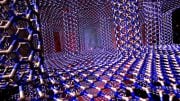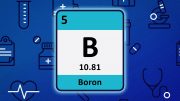
Researchers at UT Dallas and their collaborators have created and characterized tiny crystals of boron arsenide that have high thermal conductivity.
The inner workings of high-power electronic devices must remain cool to operate reliably. High internal temperatures can make programs run slower, freeze or shut down. Researchers at the University of Illinois at Urbana-Champaign and The University of Texas, Dallas have collaborated to optimize the crystal-growing process of boron arsenide – a material that has excellent thermal properties and can effectively dissipate the heat generated in electronic devices.
The results of the study, published in the journal Science, mark the first realization of previously predicted class of ultrahigh thermal conductivity materials.
Boron arsenide is not a naturally occurring material, so scientists must synthesize it in the lab, the researchers said. It also needs to have a very specific structure and low defect density for it to have peak thermal conductivity, so that its growth happens in a very controlled way.
“We studied the structural defects and measured the thermal conductivity of the boron arsenide crystals produced at UT Dallas,” said co-author David Cahill a professor and head of the department of materials science and engineering at Illinois. “Our experiments also show that the original theory is incomplete and will need to be refined to fully understand the high thermal conductivity.”
Most of today’s high-performance computer chips and high-power electronic devices are made of silicon, a crystalline semiconducting material that does an adequate job of dissipating heat. But in combination with other cooling technology incorporated into devices, silicon can handle only so much, the team said.
Diamond has the highest known thermal conductivity – about 15 times that of silicon – but there are problems when it comes to using it for thermal management of electronics. “Although diamond has been incorporated occasionally in demanding heat-dissipation applications, the cost of natural diamonds and structural defects in manmade diamond films make the material impractical for widespread use in electronics,” said co-author Bing Lv, a physics professor at UT Dallas.
“The boron arsenide crystals were synthesized using a technique called chemical vapor transport,” said Illinois postdoctoral researcher Qiye Zheng. “Elemental boron and arsenic are combined while in the vapor phase and then cool and condense into small crystals. We combined extensive materials characterization and trial-and-error synthesis to find the conditions that produce crystals of high enough quality.”
The Illinois team used electron microscopy and a technique called time-domain thermoreflectance to determine if the lab-grown crystals were free of the types of defects that cause a reduction in thermal conductivity.
“We measured dozens of the boron arsenide crystals produced in this study and found that the thermal conductivity of the material can be three times higher than that of best materials being used as heat spreaders today,” Zheng said.
The next step in the work will be to try other processes to improve the growth and properties of this material for large-scale applications, the researchers said.
Reference: “High thermal conductivity in cubic boron arsenide crystals” by Sheng Li, Qiye Zheng, Yinchuan Lv, Xiaoyuan Liu, Xiqu Wang, Pinshane Y. Huang, David G. Cahill and Bing Lv, 5 July 2018, Science.
DOI: 10.1126/science.aat8982








Be the first to comment on "Heat-Conducting Crystals Help High-Power Electronics Keep Their Cool"